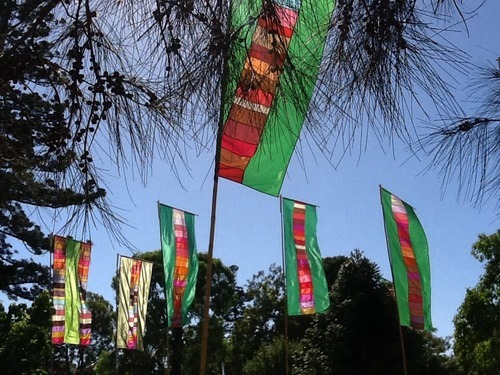Combining Forces
According to Scott Pollack, writing in Forbes Magazine business development is all about figuring out how the interactions of those forces combine together to create opportunities for growth. What kind of forces are combining together to create opportunities around you? Are they hidden in the sub-text of a novel, written in the clouds in the sky, lying around on the kitchen bench, in a line of music? Where are you noticing opportunities?
Sometimes the most obvious ones are staring us in the face and we can’t see the wood from the trees. Imagine this ….
2024 is the first year the National Clean Energy network has delivered a dividend to its shareholders.
The decision to create a non profit Energy Consortium was made at the 2016 Community Services Summit conference when a Church Alliance put up a proposal to form an energy co-op by building wind farms and providing low cost energy to all its clients.
The story behind this venture goes back to WOMADelaide 2014. Rev. Mariah McDonald was holidaying in Adelaide and heard about a regional community setting up its own wind farm. At the time, Rev McDonald was chair of a major national church welfare agency and had been concerned and the number of clients coming to the organisation accessing no interest loans to cover their electricity bills. Mariah had been charged with getting some new business development opportunities and to wean off government programs and she had gone to the music festival to get re-charged.
After her music filled week-end she returned to her agency on the east coast and commissioned a small piece of research to explore the potential of clean energy, community led projects and the potential for leadership in energy pricing of the not for profit sector. It was a wicked problem - energy bills were sending families to the wall. Consumption was going up and with the additional cost of water in the drier states something had to be done.
She commissioned the research from reserves in her agency (they had over $20million earning interest and she had convinced her Board to set aside $50,000 pa for innovation grants internal to their agency).
The early research was very encouraging and her Board was inspired and confident it could take a leadership role and make a real contribution to the energy market. The next step was to commission some more thinking and develop relationships to establish a consortium amongst not for profits.
The project terms of reference included a set of non-negotiable features. The project had to:
- deliver cheaper power to the poor, especially those who were the clients of welfare services
- be not for profit and that meant not for loss
- be collaborative
- be big and bold
- have capacity to be sustainable
- have capacity to disrupt the energy market and deliver lower power prices for everyone
During this next stage, a further investment was sought and received from a benevolent foundation, a university and her own church and a crowd-funding campaign was launched to get an “ideas bank” set up to support the project. One idea lead to another and the project had many fans, including a group of lawyers who agreed to work pro bono and deal with land management issues and any local jurisdiction issues. By the end if the first year there were over 500 volunteers working on the project in various ways and Mariah’s organisation was receiving plenty of attention of the energy companies. The community support and there were lots of spin off crowd funded projects coming out of the Ideas Bank. It was phenomenal, new financial products including social investment and green bonds were developed by three financial institutions.
An early sign of its potential occurred when on the major national energy agencies offered to provide a discount to anyone who was a client of Mariah’s agency. Instead they brokered a deal to have the yet to be built wind farms feed back into the energy agency’s grid on the east coast of Australia.
There were a few set backs along the way and the original investment predicted was 15% more than had first been anticipated, however it was predicted that a return would not be made until 2028 so they were two years ahead of schedule on that front. Mariah had convinced the board of PanPacific Ethical Investments to have some of their superannuation funds invested and the key union employing staff in the not for profit sector had helped considerably by providing a vehicle for their members to do a direct debit as a voluntary contribution to the scheme as well as the major salary packaging provider doing the same.
By 2020 Mariah was no longer chairman of the church agency, however was appointed as their representative to the consortium (that was now constituted as a cooperative). She was thrilled to be at the 2024 AGM where a new project using solar power was being launched.
Mariah was a very happy face in the audience when the Governor-General arrived to recognise the founding members of the consortium with Orders of Australia for their service the community.

@moirades
2 notes
 ilovelyjoy liked this
ilovelyjoy liked this worldofnightingales liked this
startsomegood posted this
